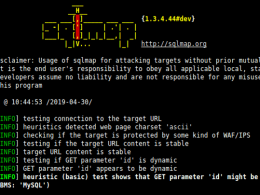It is difficult to make accurate trends about cybersecurity predictions for 2023
However, here are a few 15 Cybersecurity predictions potential trends that could shape the security landscape in 2023:
1. The continued growth of cloud computing and remote work: The COVID-19 pandemic has accelerated the adoption of cloud computing and remote work. These trends will likely continue in the coming years, leading to an increased focus on securing remote access and protecting data in the cloud.
2. Rise of artificial intelligence and machine learning in cybersecurity: Artificial intelligence and machine learning are increasingly used to detect and prevent cyber threats. In the future, we may see more advanced AI systems that can adapt and learn independently, making them more effective at identifying and responding to Cyber threats.
3. Increase in nation-state cyber attacks: Nation-state cyber attacks are likely to continue to be a significant threat in the coming years as governments worldwide seek to gain an advantage through cyber espionage and other types of cyber attacks.
4. The emergence of new technologies: As new technologies such as the Internet of Things (IoT) and 5G become more widespread, they will likely bring new cybersecurity challenges that need to be addressed.
5. Continued focus on data privacy: With the increasing amount of personal data collected and stored by businesses and governments, there is likely a continued focus on protecting and ensuring that it is used responsibly.
6. Greater use of biometric authentication: As cyber criminals become more sophisticated, traditional authentication methods, such as passwords, may become less effective. We may see an increase in biometric authentication methods, such as fingerprint scanners and facial recognition, to provide an additional layer of security.
7. Increased use of encryption: Encryption is important for protecting data and ensuring unauthorized actors cannot access it. We may see increased use of encryption in various contexts, including in the communication of sensitive data and the storage of data in the cloud.
8. Evolution of ransomware: In this cyber attack, the cyber-criminals encrypt a victim’s data and demand a ransom in exchange for the decryption key. We may see the evolution of more advanced forms of ransomware that are harder to detect and more difficult to mitigate.
9. The emergence of new cybersecurity regulations: As the importance of cybersecurity becomes more widely recognized, we may see the emergence of new rules and guidelines aimed at improving cybersecurity practices. It could include new requirements for businesses to adopt certain security measures or to report cyber incidents to authorities.
10. Greater collaboration between industry and government: Companies and governments need to work together to share information and best practices. We may see more collaboration between the private sector and the government to improve cybersecurity efforts.
Here are a few additional potential trends that could shape the cybersecurity landscape in 2023:
11. Emergence of new cybersecurity threats: As technology advances and new vulnerabilities are discovered, we may see the emergence of new types of cyber threats. For example, the increasing use of artificial intelligence and machine learning could lead to the development of new kinds of cyber attacks that exploit these technologies.
12. Greater focus on supply chain security: As supply chains become more complex and globalized, there is an increased risk of cyber threats being introduced through third-party vendors and partners. We may see a greater focus on supply chain security as organizations seek to protect themselves from these threats.
13. Increased use of cybersecurity insurance: As the frequency and severity of cyber attacks continue to rise, organizations may turn to cybersecurity insurance to protect themselves against the financial impact of a breach. This could lead to the growth of the cybersecurity insurance market.
14. The emergence of new cybersecurity tools and technologies: The development of new cybersecurity tools and technologies to detect and prevent cyber threats, use advanced analytics and machine learning to identify unusual activity, and develop new types of security software.
15. Greater focus on cybersecurity awareness and education: As the number and complexity of cyber threats continue to grow, there will be an increased need for individuals and organizations to be aware of cybersecurity risks and to understand how to protect themselves. We may see a greater focus on cybersecurity awareness and education to help people understand how to stay safe online.











